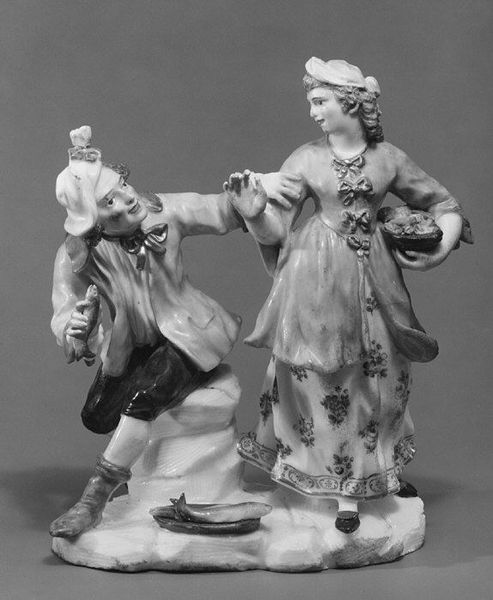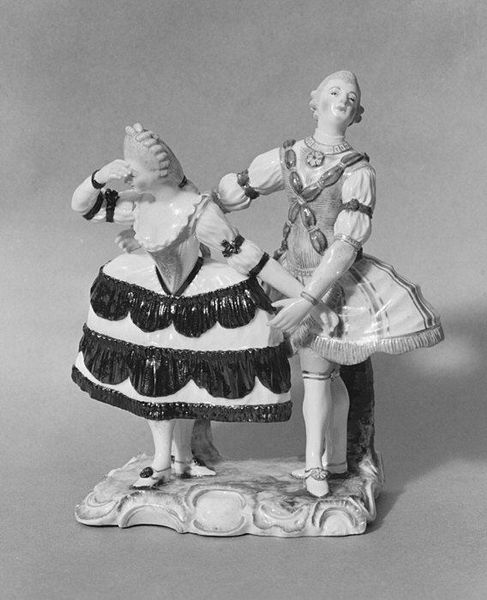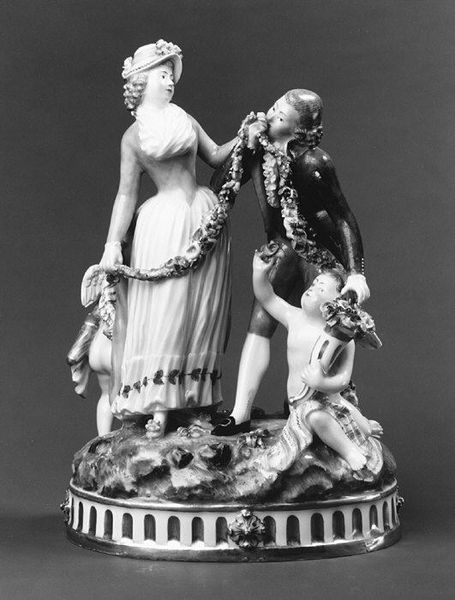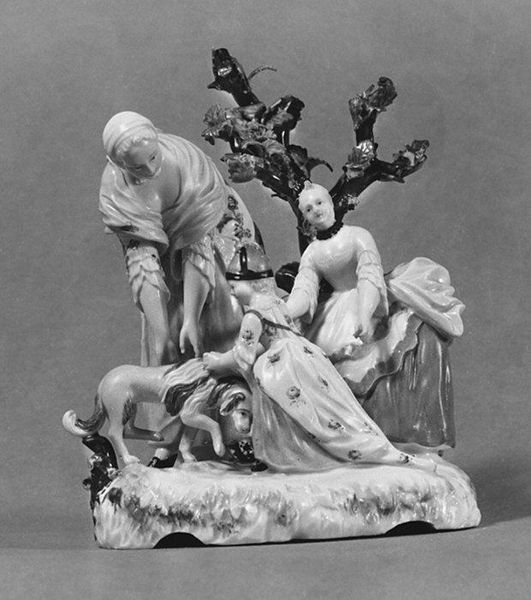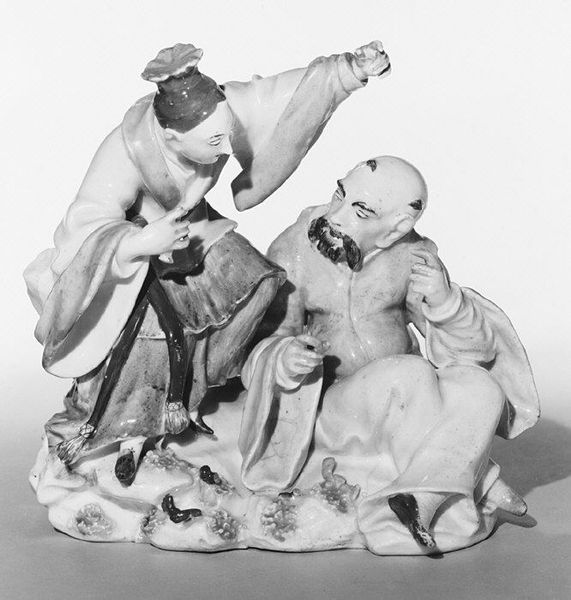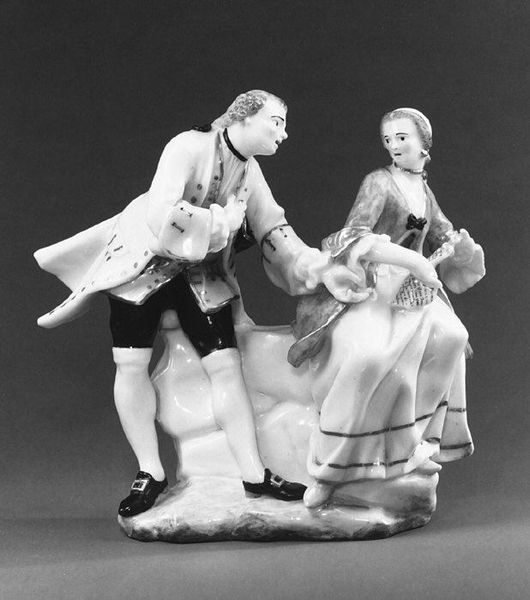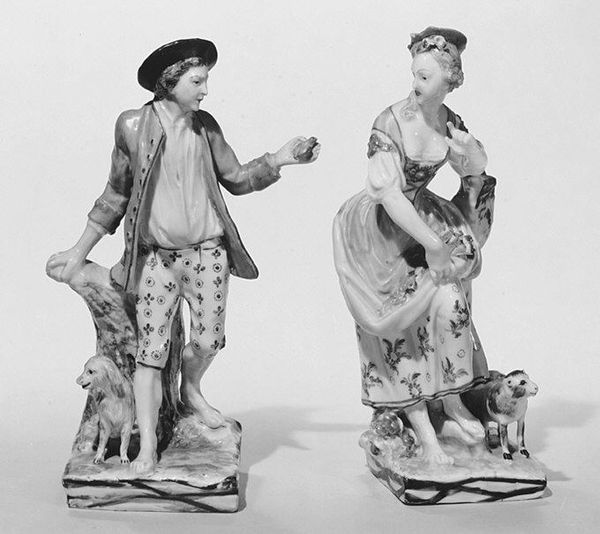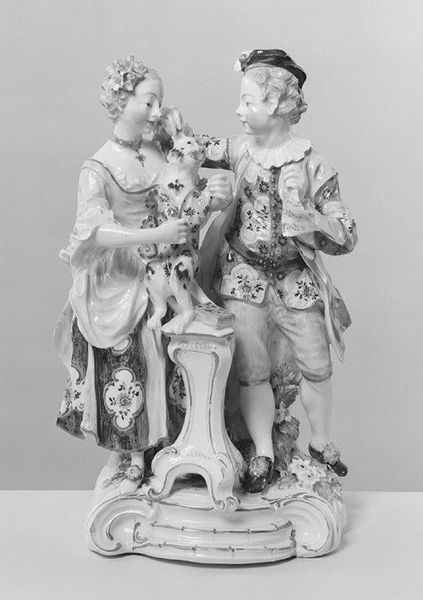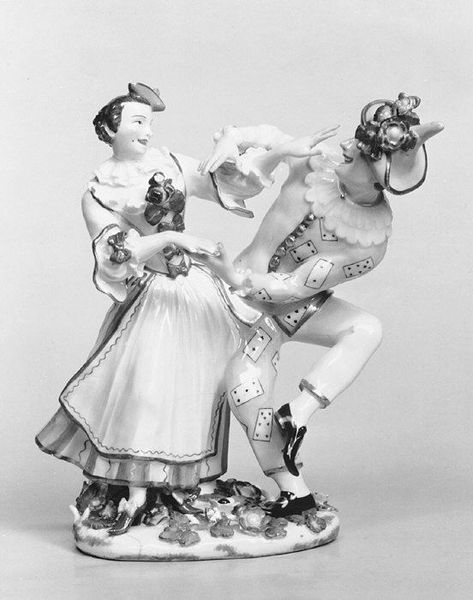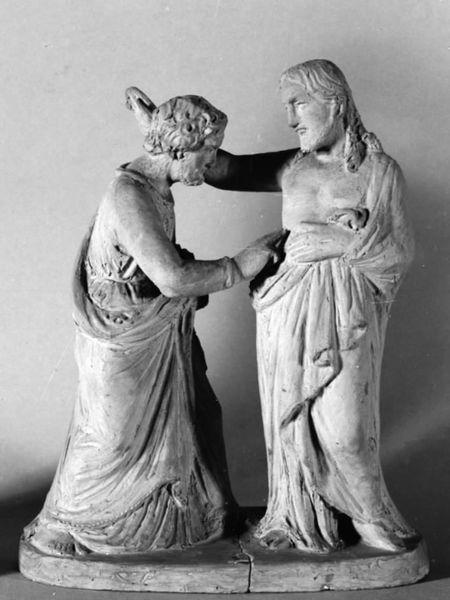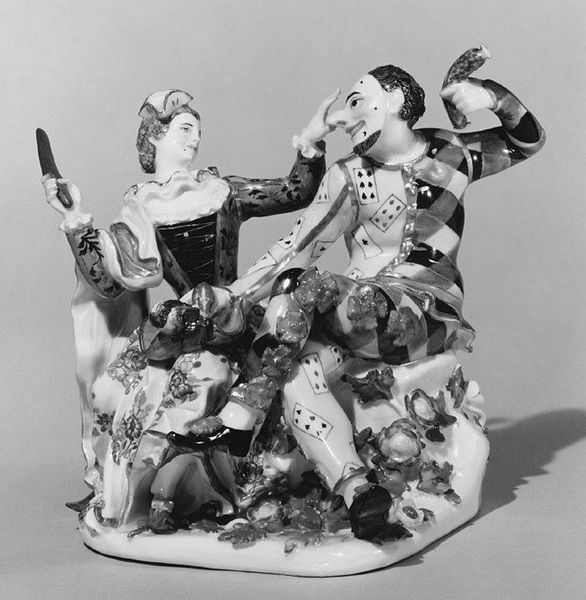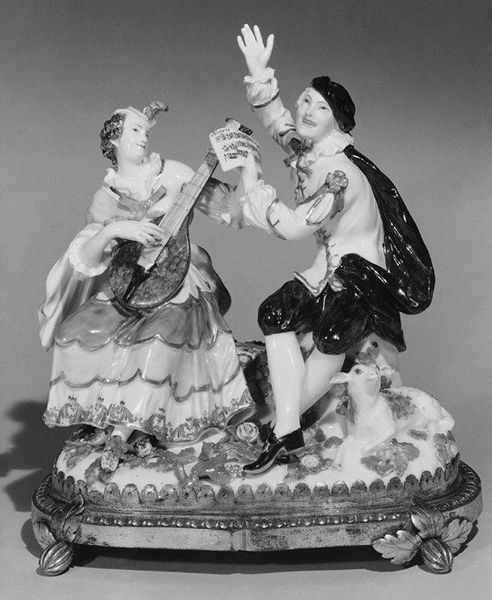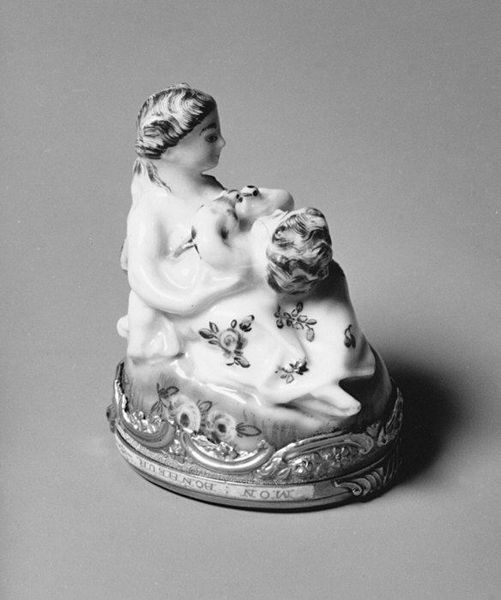
ceramic, porcelain, sculpture
#
portrait
#
sculpture
#
ceramic
#
porcelain
#
figuration
#
sculpture
#
genre-painting
#
decorative-art
#
miniature
#
rococo
Dimensions: 8 1/8 × 7 3/8 in. (20.6 × 18.7 cm)
Copyright: Public Domain
Curator: Here we have a delicate porcelain sculpture titled "Woman and her tailor", created between 1739 and 1751 by the Capodimonte Porcelain Manufactory. It resides here at the Metropolitan Museum of Art. Editor: The sculpture projects an aura of domesticity; a scene caught mid-action as if in a play. I'm drawn to the intimate exchange between the figures—there's a vulnerability present, despite the formality of their attire. Curator: Exactly. During this Rococo era, fashion held significant social weight. This image reflects not only style, but also gender and class structures. It allows us to view how power dynamics played out within everyday interactions. Editor: The tailor's pose suggests a delicate adjustment, but I notice a potential hint of control in his placement of hand upon the woman. What symbolic function do the florals of their dress patterns perform, beyond pure aesthetic? Curator: The florals, while decorative, also served as signifiers of status, and the degree of detailing may reflect societal standing. We must examine the historical context. Women during this period were expected to embody beauty and display their husbands' success. Editor: It strikes me as a symbol of transformation—clothing remaking identity. What of the platform and scrolled features: Does it evoke a theater or public staging that alters our interpretation? Curator: Interesting question. It might signal the performative nature of class itself, a reminder that these identities were often carefully constructed for public view. Consider also the material - porcelain allowed for precise rendering. Editor: To me, it feels deeply indicative of an attempt to freeze an exact moment in social theater. This sculpture allows modern viewers a unique point of access for interpreting 18th century social and aesthetic priorities. Curator: Yes, it truly serves as an intersection between the artistic, political, and the deeply personal! Editor: Quite so. A moment in history carefully held in lasting ceramic.
Comments
No comments
Be the first to comment and join the conversation on the ultimate creative platform.
